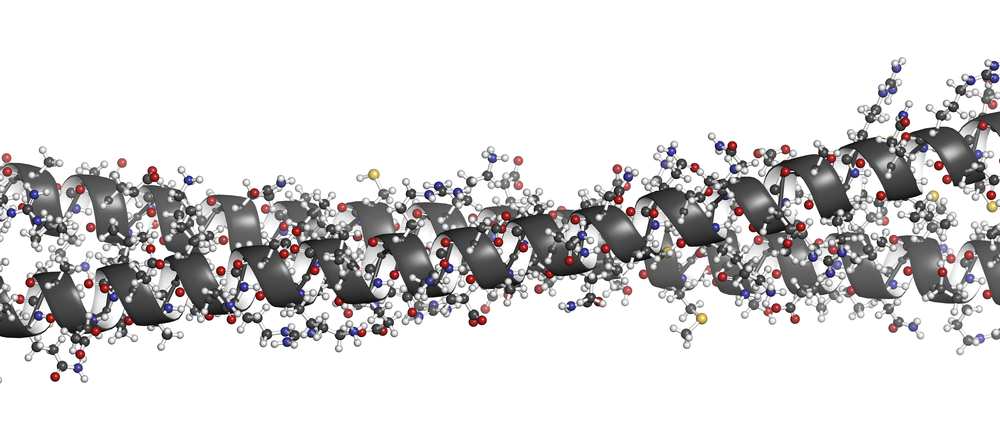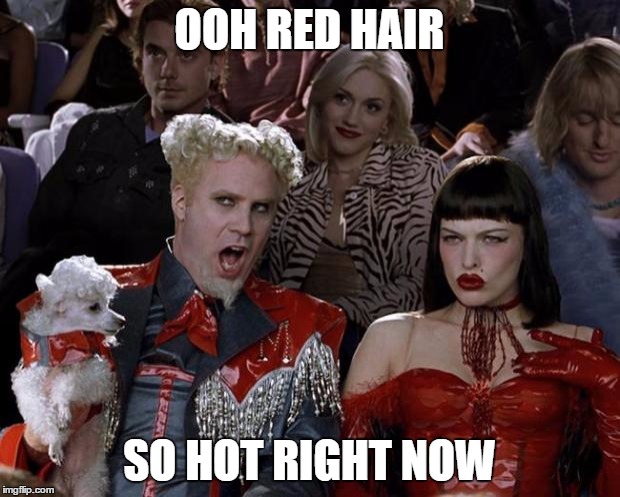Hair resists decay due to keratin, a structural protein. The structure and chemical composition of keratin make it difficult for organisms to break it down.
Zombies, mummies, vampires… these undead ghouls have created several myths in pop culture about what happens to life after it dies. However, what really happens to our mortal bodies after our hearts stop beating?
You know the general process: after the decaying process is largely over, our bodies begin to shrivel up. What remains are the dry and tough parts – bones, nails and perhaps most interestingly… hair!
Before we jump into what happens to hair after death, let us look at the biology of hair.
What Is Hair Made Of And How Does It Grow?
In life, hair growth is directly connected to the blood vessels at the base of each hair follicle. These blood vessels feed the hair roots to keep them growing and break through the skin. By the time the hair reaches the epidermis (the outer surface of the skin), the cells within that hair are no longer alive. That’s why it doesn’t hurt to cut your hair… it’s basically already dead!
The main component of the hair is keratin, a protein that does not contain water and is also completely insoluble. The reason for this insolubility is the amino acids – the building blocks of protein – that make up the hair and the hair structure of the hair—linear and tightly coiled. This makes hair one of the strongest biological substances in nature.
Also Read: What’s The Science Behind Hair Straighteners/Curlers?
Does Dead Hair Grow?
One idea that has captivated our collective imagination is that your hair will continue to grow after you die! However, this is untrue.

This myth exists because it really looks like the hair on a corpse grows by itself. However, this phenomenon can be attributed, quite simply, to good ole relativity. Considering that human bodies consist of 70% water, it is no surprise that they shrink considerably after the loss of moisture. Compared to its now shrunken appearance, the corpse’s hair seems to have grown longer.
Also Read: Why Do We Lose Hair From Our Head, But Not The Rest Of Our Body?
Does Hair Decompose And How Long Does It Take?
Hair outlasts most other soft tissues due to the insoluble and stable structure of keratin. Its chemical composition makes it difficult for proteolytic enzymes – enzymes that break down proteins – to break down hair. In particular, the amino acids histidine, arginine and lysine are abundant in hair keratin, as is the amino acid cysteine. The bonds between the amino acids lead to a 3-D structure that makes keratin very resilient and hair difficult to break down. Very few microbes such as the fungus Alternaria spp or animals such as the carpet beetle can digest hair.
Collagen, which makes up bones and connective tissue, is another protein that resists decay. It has a similar composition and structure to keratin. They both have amino acid compositions that lend to their strength (although they have several differences in their amino acid composition). Both are linear and tightly coiled proteins with multiple polypeptide subunits.

This is why hair is one of the few organic relics of death.
But nothing lasts forever, and hair and bones eventually disintegrate. What’s different is how quickly the decomposition process takes place.
The burial environment influences the rate of decomposition to a considerable extent. Soil, moisture, chemicals and the animals found in the environment can either increase the decomposition rate or preserve the corpse. Dry and arid conditions like those found in deserts are excellent preserves of hair, as microbes do not thrive in such conditions. However, in most normal soils, both hair and bone will eventually degrade after a few years.
Both collagen and keratin have similar chemical secrets to resisting decay. This has spawned a line of research where labs are trying to synthesize these fibers to create stronger yet eventually biodegradable alternatives to plastics.
Also Read: Science Of The Skeleton: Why Don’t Bones Decay?
Does Hair Change Color After Death?
Hair gets its color from two different types of pigment: eumelanin and pheomelanin. Eumelanin is the pigment that gives our hair its darkness, while pheomelanin gives our hair its redness. Your hair color is especially distinctive because it has its own unique combination of eumelanin and pheomelanin.
Eumelanin has two subtypes: black and brown. If you have more black eumelanin in your hair, it will naturally be darker. Consequently, if there is a total lack of black eumelanin and a low level of brown eumelanin, then there is a high chance of you will be born with blond hair. As you age, the eumelanin levels of both kinds drop, causing your hair to gray.
Pheomelanin, on the other hand, is responsible for adding red and orange. It is rare to have a high concentration of pheomelanin, which is why there are so few natural redheads in the world.
It does, however, exist in some quantities in everyone’s hair. It is also more stable than eumelanin. Eumelanin breaks down easily through the process of oxidation, but pheomelanin does not. Pheomelanin tends to hang around in the hair even under extreme conditions. Therefore, under wet oxidizing climates, the eumelanin in the hair is lost over extended periods of time, leaving behind the red pigment, pheomelanin.

In short, the answer is yes! There is a chance that your hair will turn red after your death! If you need a point of reference, you should look at the ancient Egyptians. Egyptian mummies seem to sport a healthy shade of rust-colored locks, despite the centuries of decay. It does take longer for the oxidation process to occur in controlled dry conditions, like in an Egyptian tomb. Nevertheless, nature doesn’t discriminate. Red hair, the fashion of the undead, eventually gets to us all.
It is interesting to note how transient we consider our hair to be, cutting it confidently, knowing that it will simply grow back. However, the last set of hair follicles you develop will probably outlast whatever civilization you call home! Not so transient after all. Who knew the hair on our head could be so dynamic—even after death.
Also Read: What Is Pallor Mortis?
How well do you understand the hair of the dead?
Can you answer three questions based on the article you just read?

References (click to expand)
- Tridico, S. R., Koch, S., Michaud, A., Thomson, G., Kirkbride, K. P., & Bunce, M. (2014, December 7). Interpreting biological degradative processes acting on mammalian hair in the living and the dead: which ones are taphonomic?. Proceedings of the Royal Society B: Biological Sciences. The Royal Society.
- Thody, A. J., Higgins, E. M., Wakamatsu, K., Ito, S., Burchill, S. A., & Marks, J. M. (1991, August). Pheomelanin as well as Eumelanin Is Present in Human Epidermis. Journal of Investigative Dermatology. Elsevier BV.
- THE AMINO ACID COMPOSITION OF KERATINS - www.jbc.org
- Wilson, A. S. (2017, February 10). Taphonomic Alterations to Hair and Nail. Taphonomy of Human Remains: Forensic Analysis of the Dead and the Depositional Environment. John Wiley & Sons, Ltd.
